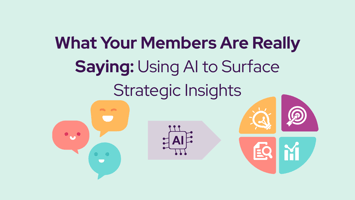Ever since ChatGPT exploded onto the scene a couple years ago, setting a new standard for how...
The incredible pace of AI development means that every 4–6 months, the landscape shifts dramatically. These changes aren’t limited to new models or technical benchmarks — the real impact is in the rapidly expanding universe of what’s possible. Larger context windows, models capable of more complex reasoning, breakthroughs in image and audio generation — each advancement opens up entirely new categories of use cases.
None of this is breaking news. The tech world is saturated with LinkedIn posts, industry articles, and hot takes on how fast AI is moving. But what’s often missing from these discussions is the “so what?”
What does this rate of change mean for your organization?
What do you need to do differently to stay relevant?
And why can’t you afford to wait and see?
At Betty, we spend a lot of time thinking about what AI will make possible in the next 6 months — not because we have any secret industry insight or have a crystal ball (though Thomas Altman can sometimes give that impression), but because we’ve learned the hard truth:
If you're only preparing for what AI can do today, you're already behind.
It may sound contradictory, but the faster AI evolves, the more you need to future-proof your approach. The teams who wait for the dust to settle will find that it never does — and while they’re standing still, their peers are racing ahead.
For associations, this means taking proactive steps: exploring AI use cases specific to member engagement, events, education, and advocacy; piloting tools that can streamline internal workflows; and creating a culture that encourages experimentation with emerging technologies. You don’t need to know exactly where the road leads — but you do need to be moving.
Why you can't wait
“Wait and see” feels safe — especially when you’re dealing with something as fast-moving and unpredictable as AI. But in today’s environment, it’s actually the riskiest move you can make.
AI is no longer a futuristic add-on or a moonshot idea for innovation teams. It’s becoming a foundational capability that affects everything from how you serve your members to how you make decisions internally. Organizations that adopt and iterate on AI now will:
- Build internal fluency and muscle memory while others are still debating use cases.
- Deliver more personalized, responsive, and scalable services.
- Unlock efficiencies that allow them to do more with less.
Associations, in particular, can take immediate action by establishing small cross-functional teams to test AI-driven solutions, attending AI-focused learning events, partnering with vendors who specialize in AI for membership-based organizations, and dedicating time each quarter to reviewing how AI advancements may unlock new strategic opportunities.
Meanwhile, those who delay will face a steeper learning curve, fewer competitive advantages, and — most importantly — declining relevance. Your members, your partners, and your competitors are already exploring how to integrate AI. The longer you wait, the harder it will be to catch up.
.png?width=173&height=70&name=Betty_RGB%201%20(1).png)



